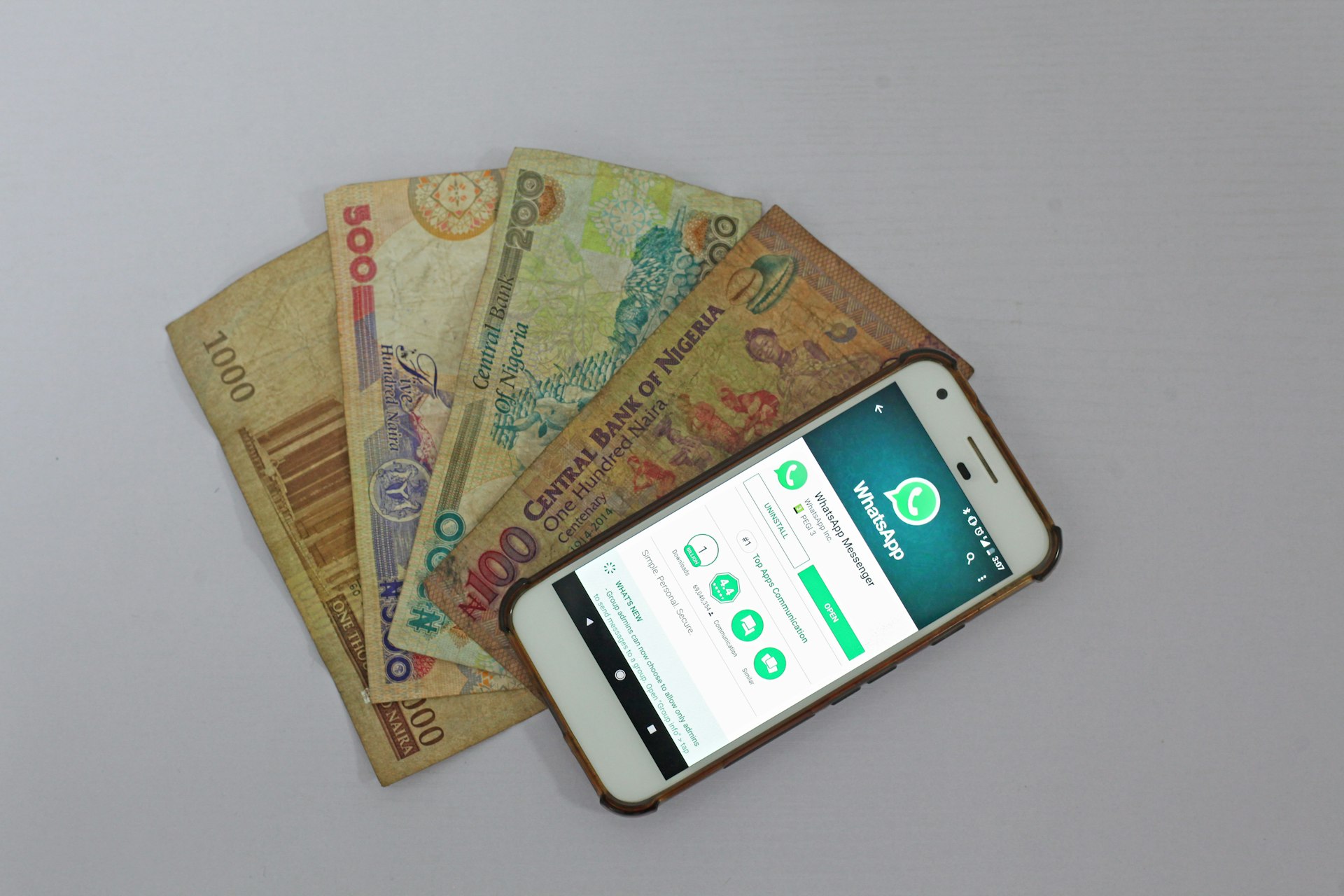Unlocking Direct Value: How Cryptocurrency Powers Peer-to-Peer Transactions

Photo by Mariia Shalabaieva on Unsplash
Introduction: The Rise of Peer-to-Peer Transactions in Cryptocurrency
Over the past decade, cryptocurrency has transformed digital commerce by enabling direct, secure payments between individuals. This innovation, known as peer-to-peer (P2P) transactions , empowers users to send and receive funds without relying on banks or financial institutions. The result is greater autonomy, lower costs, and new opportunities for personal and business finance. This article explores how P2P cryptocurrency transactions work, the benefits and challenges, and provides actionable steps for getting started.
How Peer-to-Peer Cryptocurrency Transactions Work
At its core, cryptocurrency uses decentralized technology to facilitate transactions directly between parties. When you send cryptocurrency, you transmit an electronic message to the network, specifying the recipient’s address, the amount, and the transaction details. These instructions are visible to everyone on the network and grouped with other recent transactions into a ‘block’ [2] .
Miners-network participants who validate transactions-compete to solve complex cryptographic codes. Once a block is verified, it is added to the blockchain, an immutable public ledger. The recipient then receives the cryptocurrency, and the transaction is permanently recorded. This system, pioneered by Bitcoin, allows payments to be sent directly from one party to another [3] .
Unlike traditional bank transfers, there is no central authority overseeing these exchanges. Instead, consensus mechanisms and public ledgers ensure security and transparency. Each network participant holds a complete copy of the ledger, verifying the authenticity of every transaction [4] .
Benefits of Peer-to-Peer Cryptocurrency Transactions
Direct control and privacy: Users manage their own digital wallets, giving them full autonomy over their assets. Unlike banks, which keep transaction details private and control movement, P2P networks record every transaction transparently while preserving pseudonymity [3] .
Lower costs: P2P transactions typically incur lower fees compared to traditional banking or centralized crypto exchanges. Fees vary by platform and payment method, but many P2P exchanges aim to minimize transaction costs [1] .
Global access and inclusivity: Anyone with an internet connection can participate, regardless of location or banking status. This makes cryptocurrency especially valuable for people in regions underserved by traditional financial institutions [5] .
Security and transparency: Advanced cryptography and consensus mechanisms protect transactions from fraud and tampering. The blockchain ledger is publicly auditable, ensuring accountability and reducing the risk of double-spending [3] .
Getting Started with Peer-to-Peer Crypto Exchanges
To begin making P2P transactions, you’ll need to:
- Choose a reputable P2P exchange platform: Research platforms that facilitate direct crypto trades between individuals. Look for strong security features, user ratings, and transparent fee structures. Popular examples include LocalBitcoins, Paxful, and Binance P2P. Visit their official websites to review terms and sign up.
- Set up a digital wallet: You’ll need a wallet to store and manage your cryptocurrency. Options include software wallets (such as mobile apps or desktop programs) and hardware wallets for enhanced security. Ensure your chosen wallet supports the cryptocurrencies you intend to use.
- Verify your identity: Most platforms require some level of identity verification to prevent fraud and comply with regulations. Follow the platform’s instructions to complete verification.
- Browse or create offers: On a P2P exchange, you can either browse existing offers to buy/sell crypto or create your own. The platform matches buyers and sellers, often using escrow services to hold funds until both parties fulfill transaction terms [1] .
- Complete the transaction: Once matched, follow the specified steps to transfer funds and confirm receipt. Escrow systems help ensure both sides honor the agreement before funds are released.
If you’re uncertain where to start, search for “peer-to-peer cryptocurrency exchange” on reputable tech news sites or crypto forums. You can also contact your chosen exchange’s customer service for onboarding assistance.
Real-World Applications and Case Studies
P2P crypto transactions are increasingly used for:
- Remittances: Migrant workers use crypto to send money home quickly and affordably, bypassing costly international transfer fees.
- Freelance payments: Remote workers accept payment in cryptocurrency, receiving funds instantly from clients around the world.
- Local commerce: In some communities, users trade goods and services directly using crypto, sometimes facilitated by online classified platforms.
For example, platforms like Binance P2P and Paxful provide secure environments for these exchanges. Before using any service, review user feedback and platform reputation to minimize risks.

Photo by Vitaly Mazur on Unsplash
Challenges and Potential Solutions
While P2P crypto transactions offer many advantages, users should be aware of potential challenges:
- Fraud and scams: Because transactions are direct, users must verify counterparties’ reputations. Platforms often include rating systems and escrow services to protect users [1] .
- Regulatory uncertainties: Cryptocurrency regulations vary widely by country and can affect platform availability or security. Research local laws and compliance requirements before trading.
- Technical complexity: New users may find wallets and exchanges confusing. Many platforms offer tutorials, help centers, and customer support to guide beginners.
To address these issues, always:
- Use platforms with robust security and verified user reviews.
- Confirm counterparties’ identities and transaction details before sending funds.
- Start with small transactions to gain experience and minimize risk.
- Stay informed about regulatory updates by visiting official government and financial authority websites.
Alternative Pathways and Best Practices
If you’re not ready for direct P2P trades, consider:
- Using payment services like PayPal, Cash App, or Venmo to buy, sell, or hold cryptocurrencies. These platforms offer familiar interfaces and buyer protections [5] .
- Investing via Bitcoin trusts, mutual funds, or ETFs through traditional brokerage accounts. These vehicles provide exposure to crypto markets without direct coin ownership.
When selecting a method, compare fees, supported currencies, and ease of use. Consult your financial advisor or research platforms on trusted tech and finance websites for up-to-date recommendations.
Summary: Key Takeaways and Next Steps
Peer-to-peer cryptocurrency transactions unlock new possibilities for direct, global exchange. By understanding how P2P networks work, choosing secure platforms, and following best practices, you can access the benefits of decentralized finance while minimizing risks. Always verify platform reputation, use recommended safety measures, and stay current with industry developments. For further guidance, search terms like “beginner’s guide to P2P crypto trading” or “how to choose a crypto wallet” on reputable news and education sites.
References
- [1] Elluminati Inc. (2023). How P2P Crypto Exchange Works.
- [2] Reserve Bank of Australia (2024). Digital Currencies Explainer.
- [3] Nakamoto, S. (2008). Bitcoin: A Peer-to-Peer Electronic Cash System.
- [4] Cointelegraph (2024). What are peer-to-peer (P2P) blockchain networks and how do they work?
- [5] Kaspersky (2024). What is cryptocurrency and how does it work?
MORE FROM moneysaversearch.com













